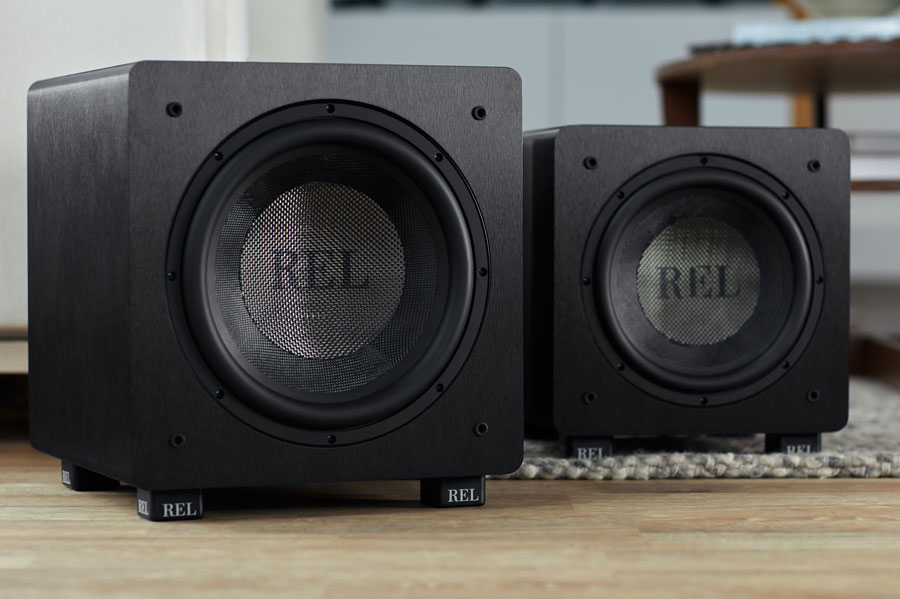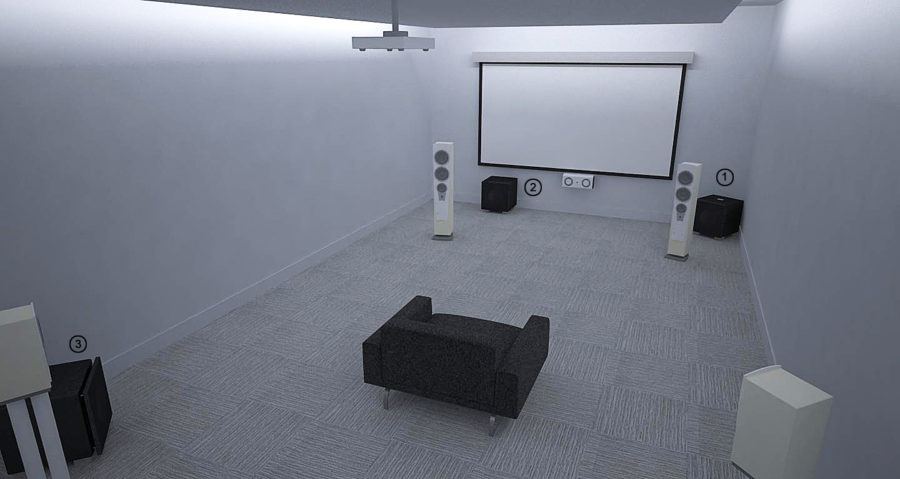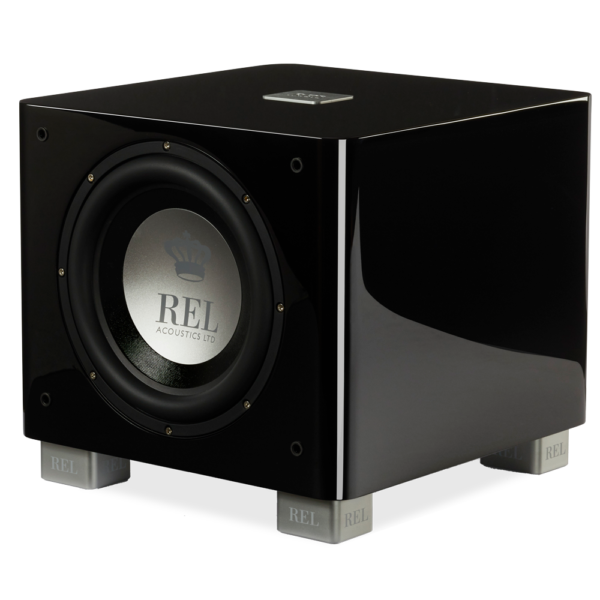Blog
Adding 3D to Theater Pt 2
Expanding to HT/3D

If you’ve been following along with us, we’ve discussed how to build a REL 3D system quite a bit recently. The previous articles focused on starting with a Serie T/i or Serie S and building into a two or three subwoofer system. But if you’re more of a theatre maven, or simply starting with a Serie HT model and looking to upgrade into REL 3D, or in this case REL HT-3D, let’s dive into how to do so and in what order.
To review, the fundamental difference between a classic REL and an HT REL is that classic RELs began as a way to transform music systems into full range miniature concert halls using High Level Connectivity as a means to obtain perfect seamless integration. Home Theatre, or Serie HT for short, trades in some of the high zoot stylishness of the classics for FAR more power, larger and more potent drivers and larger cabinets, all at lower prices than their approximate equivalents. And they make do without the High Level Connection which saves around $100-800 depending on model, since they’re pure .1/LFE delivers of thunder and lightning.
Ok, you’re cheerfully bashing the heck out of your living room theatre with an HT/1205 or 1003 when a thought creeps in; “I wonder what could be better than this?” REL HT-3D is what. This system allows you to upgrade your HT theatre in several stages to accomplish the meat of the mission that full REL 3-D delivers, based upon two or more HT subs at its core.

To better understand theatre, start with Dolby 5.1, any theatre mode more complex than that (7.2, 11.2, etc. ) requires perfect 5.1 to work properly. While many confuse themselves by breaking 5.1 into 6 individual digital channels (Are all channels the same? Do I do anything different for this channel than that?) it’s more useful to break the 5 speakers into three (3) groups and understand their purpose. We’ll build a theoretical system based on an HT/1508 main sub, HT/1205 Rear and a T/7i center channel sub.
- L-R Main Speakers/REL: These 2 channels are based on a high quality stereo set, don’t treat these as though placement is a matter of convenience and aesthetics only. Get positioning just right and your theatre springs to life, get it wrong and it lies there flat and dull. Why? Because these two speakers are responsible for setting the table, for providing the sense of scale and accurate placement within a 3D image that theatre relies upon to be transportive. Set all speakers to Full Range for best effect in your AV receiver’s menu.
Pro Tip
For best sound, try dialing in your theatre manually instead of using room correction. Set these to Large/Full Range and avoid using a delay or level settings.
2. Next up is the center channel and corresponding classic REL (Serie T/i, or Serie S), often identified as the single most important speaker in home theatre. Virtually ALL dialogue and events occurring on screen take place through this speaker so, yes, it’s incredibly important. We generally use T/7i or larger direct-radiating REL models. Select a classic REL (you’ll want to come off the connections on the rear of your center channel speaker) with High Level Connection to unlock the spatial characteristics that mark the differences between good and great theatre.
Pro Tip
Set AVR/Processor to Large/Full Range. Adjust Level in Speaker Setup Menu manually, switching back and forth between L and C, then checking R and C channels to make sure your level is accurate. Start with delay at 3 (in Feet setting or 1m if in Metric setting) then increase the number to 4 in as fine an increment as your AVR or processor allows. Smaller numbers produce sharper, harder consonants and larger numbers produce softer, mellower sound as you’re increasing the amount of delay (for electric guitar players, this effect is a lot like adding a modest amount of reverb).
It takes a bit of listening carefully to a trustworthy movie track but you can get this channel to lay into the soundstage created by the L-R main speakers perfectly with a little patience. Generally, we guide for using the smallest of the RELs here, since the vast majority of center channel speakers, were they one-half of a stereo pair, would be considered the equivalent of a modest bookshelf speaker. This REL is the first step to take in dramatically improving your theatre.
3. Surround Speakers/ Matching HT or Classic REL: The surround speakers are responsible for the overall scale of space within which you, the viewer/listener resides taking in this remarkable event that is a modern movie. Essentially, the front three speakers are responsible for the front third of the soundspace and much of the precise localization within this front third.
The surrounds are able to create the rear 2/3 of this volume of space, so don’t skimp on these speakers. As to the model of HT sub used back here, a medium HT like an HT/1205 works wonders to not only add incredible dynamics but also to fill in the tiny Foley effects used to sell a scene. Tiny little fluttering of scary creatures lurking just off screen become terrifying when the REL conveys the vastness of the huge cavern within which said creatures reside.
Pro Tip
Again, start by setting the speakers to Large/Full Range. Match levels to your front L and R. In modest-sized rooms, start with delays as small as 6’ (2M) and increase from there. Medium-sized theatres such as a large living room should start at 9’ (3M). The larger the number, the larger the space created.
Within the brief confines of this blog, we’ve provided a simple construct to permit the DIY theatre owner to build out in simple, relatively inexpensive steps a path to achieving performance similar to what a modest director-level screening room aspires to. The final product, properly setup using some of the unusual tips we have afforded the reader provide a pathway to unlocking the hyper realistic sound that Hollywood relies upon to take you, the viewer, inside the movie. To place you smack in the middle of action that can vary instantly from small and intimate to massively dynamic and thrilling. To achieve these results requires a willingness to jump in and make sonic judgements on your own.
While for many, this can feel intimidating ––the security of having a microphone and someone else’s preferences dictated to you can seem comforting, but the results are bland and uninspiring–– we feel an accurate roadmap and encouragement to jump in and do it yourself leads to much greater enjoyment and much higher performing theatres. Now go and enjoy the movie!
Read adding 3D to Theatre Pt. 1: Expanding to REL 3D












